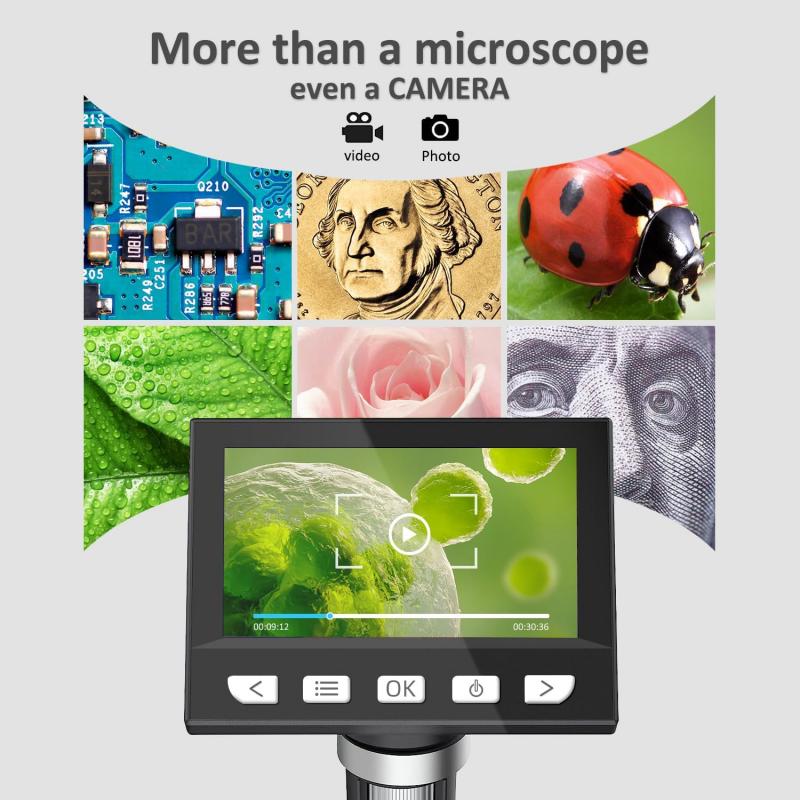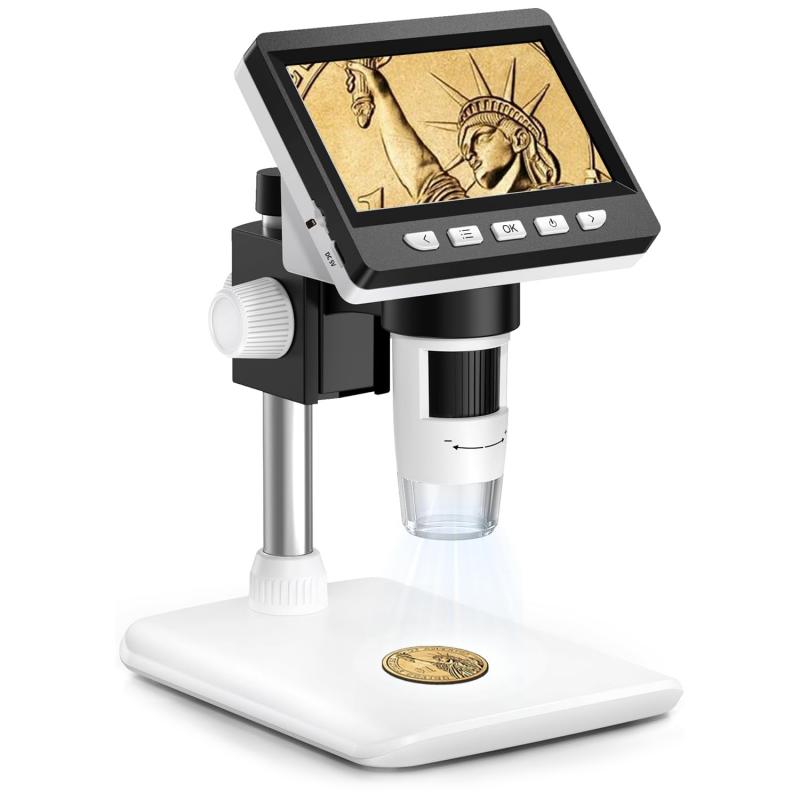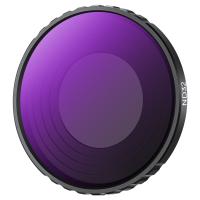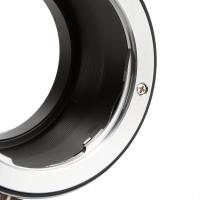How To Prepare A Cheek Cell Microscope Slide ?
To prepare a cheek cell microscope slide, follow these steps:
1. Wash your hands thoroughly to avoid contamination of the sample.
2. Use a cotton swab to gently scrape the inside of your cheek.
3. Rub the cotton swab onto a clean glass microscope slide to transfer the cells.
4. Add a drop of water to the slide to help spread the cells.
5. Add a drop of stain (such as methylene blue) to the slide to make the cells more visible.
6. Place a coverslip over the cells, being careful to avoid air bubbles.
7. Place the slide under a microscope and adjust the focus to view the cells.
You should be able to see the individual cells, which will appear as small, irregularly shaped blobs. Cheek cells are a type of epithelial cell, which are flat and thin in shape. They are commonly used for microscope slides because they are easy to obtain and prepare.
1、 Collecting cheek cells using a swab or mouthwash
How to prepare a cheek cell microscope slide:
Collecting cheek cells using a swab or mouthwash is a simple and non-invasive method to obtain cells for observation under a microscope. Here are the steps to prepare a cheek cell microscope slide:
1. Wash your hands thoroughly to avoid contamination of the sample.
2. Using a sterile cotton swab, gently rub the inside of your cheek for about 30 seconds. Alternatively, you can rinse your mouth with a mouthwash for about 30 seconds.
3. Transfer the collected cells onto a clean glass slide by gently rubbing the swab or spitting the mouthwash onto the slide.
4. Add a drop of water or saline solution to the cells on the slide to prevent them from drying out.
5. Place a coverslip over the cells, making sure there are no air bubbles.
6. Observe the slide under a microscope at low magnification (40x) to locate the cells.
7. Adjust the focus and increase the magnification to observe the cells in more detail.
It is important to note that the quality of the microscope slide preparation can affect the clarity of the observed cells. Therefore, it is recommended to handle the slide carefully and avoid touching the coverslip or the cells with your fingers. Additionally, using a staining solution can enhance the visibility of the cells and their structures. Overall, collecting cheek cells using a swab or mouthwash is a simple and effective method to prepare a microscope slide for observation.

2、 Placing the cells onto a microscope slide
To prepare a cheek cell microscope slide, you will need a few basic laboratory supplies such as a microscope, microscope slides, cover slips, cotton swabs, and methylene blue stain. Here are the steps to follow:
1. Begin by washing your hands thoroughly to avoid contamination of the sample.
2. Take a cotton swab and gently rub the inside of your cheek to collect some cells.
3. Place the cotton swab onto a clean microscope slide and add a drop of methylene blue stain to the cells. Methylene blue stain helps to highlight the cells and make them more visible under the microscope.
4. Using another clean microscope slide, gently press down on the cotton swab to spread the cells onto the slide.
5. Place a cover slip over the cells and gently press down to remove any air bubbles.
6. Place the slide under the microscope and adjust the focus until the cells come into view.
7. Observe the cells under different magnifications to get a better view of their structure and shape.
It is important to note that the preparation of cheek cell microscope slides is a basic laboratory technique that is commonly used in biology and microbiology. However, it is important to follow proper laboratory safety protocols and dispose of any used materials properly to avoid contamination and potential health hazards. Additionally, with the advancement of technology, there are now more advanced techniques such as confocal microscopy that can provide more detailed and accurate information about cells.

3、 Adding a drop of stain to the cells
Preparing a cheek cell microscope slide is a simple and effective way to observe the structure of human cells. The process involves collecting cells from the inside of the cheek, placing them on a microscope slide, and observing them under a microscope. Here is a step-by-step guide on how to prepare a cheek cell microscope slide.
1. Wash your hands thoroughly to avoid contamination of the sample.
2. Gently swish your mouth with water to loosen the cells from the inside of your cheek.
3. Use a sterile cotton swab to gently scrape the inside of your cheek. Be careful not to scrape too hard as this can cause bleeding.
4. Transfer the cells from the cotton swab onto a clean microscope slide.
5. Add a drop of water to the cells to prevent them from drying out.
6. Gently press a cover slip onto the slide to flatten the cells and prevent air bubbles.
7. Observe the slide under a microscope at low magnification to locate the cells.
8. Once the cells are located, adjust the focus and magnification to observe the cell structure.
9. To enhance the visibility of the cells, add a drop of stain to the cells. This will help to highlight the different structures within the cells.
Adding a drop of stain to the cells is an optional step, but it can greatly improve the visibility of the cells. There are different types of stains that can be used, such as methylene blue or eosin. Staining the cells can help to differentiate between the different structures within the cells, such as the nucleus and cytoplasm. However, it is important to note that staining can also alter the natural color and structure of the cells, so it should be used with caution.
In conclusion, preparing a cheek cell microscope slide is a simple and effective way to observe the structure of human cells. By following these steps, you can easily collect and observe your own cheek cells under a microscope. Adding a drop of stain to the cells is an optional step that can greatly enhance the visibility of the cells, but it should be used with caution.

4、 Covering the cells with a coverslip
To prepare a cheek cell microscope slide, follow these steps:
1. Collect a sample of cheek cells by gently scraping the inside of your cheek with a toothpick or cotton swab.
2. Place the sample on a clean glass microscope slide.
3. Add a drop of water to the sample to help spread the cells out.
4. Add a drop of stain, such as methylene blue, to the sample to make the cells more visible under the microscope.
5. Gently place a coverslip over the sample, being careful not to create any air bubbles.
6. Press down gently on the coverslip to flatten the sample and remove any excess water or stain.
7. Place the slide under the microscope and adjust the focus until the cells come into view.
Covering the cells with a coverslip is an important step in preparing a cheek cell microscope slide because it helps to protect the sample from drying out and getting damaged. It also helps to keep the cells in place and prevent them from moving around under the microscope. However, it is important to be careful when placing the coverslip to avoid creating air bubbles, which can interfere with the clarity of the image. Additionally, it is important to use a clean coverslip to avoid contamination of the sample. Overall, preparing a cheek cell microscope slide is a simple and effective way to observe the structure and function of cells.































